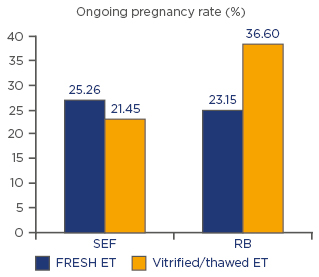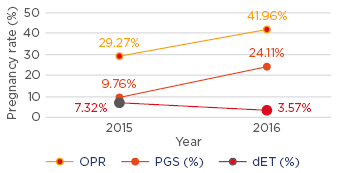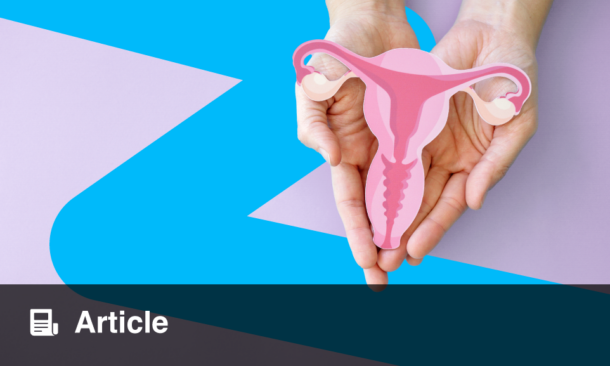The complications of multiple pregnancies (MP) should be well known by assisted reproduction specialists. Despite the general agreement that MP represent a serious and avoidable complication of assisted reproduction, in most procedures two, or even three, embryos are still transferred. Regrettably, the lack of legal limitation constitutes a ‘pathway’ to continue with this inappropriate and hazardous policy.
MATERIALS AND METHODS
A retrospective cohort analysis, with a study group of in vitro fertilisation (IVF) cycles performed between June 2015 and May 2016, at a university-associated assisted reproductive technology centre, was assessed. The results were compared to those published by the Spanish Fertility Society (SEF),1 corresponding to the activity of Spanish centres in 2014.
A total of 203 fresh and 194 vitrified-embryo transfers (ET) were compared to the 34,342 fresh and 19,549 thawed ET reported by SEF. Cycles in which donor eggs were used were not included. Ongoing pregnancy rates per transfer and differences in MP rates were compared. Pearson’s Chi-squared test was used to analyse the differences.
RESULTS
A single ET (sET) was performed in 184 out of 203 fresh ET (90.64%) and in 184 out of 194 frozen-thawed ET (94.85%). No triple embryo transfer was undertaken. Among the 51,591 ET performed in the control group, in 25.43%, 68.20%, and 6.37% of cases (among fresh ET) and in 37.64%, 57.47%, and 4.9% of cases (among thawed ET) one, two, and three embryos were transferred, respectively (p=0.000). The transfer of more than one embryo was not associated with a higher chance of pregnancy (Figure 1). Furthermore, the MP rate in our study group was 3.69%, whereas 18.30% and 0.19% of the pregnancies achieved in the control group were twins and triplets, respectively (p=0.000). The delivery of the double pregnancies of the control group was premature in 50.47% of twin and in 100% of triplet pregnancies (9.81% and 58.52% <32 weeks of amenorrhea).

Figure 1: Ongoing pregnancy rates per embryo transfer (Spanish Fertility Society and Reproducción Bilbao).
ET: embryo transfer; RB: Reproducción Bilbao; SEF: Spanish Fertility Society.
Even though a sET might be associated with a lower chance of success per transfer, the use of strict selection (including morphokinetic and genetic) criteria overcome such a challenge. There was a linear relationship between pregnancy rates and the use of preimplantation genetic screening for embryo selection in our series, despite the rate of multiple embryo transfer being lower (Figure 2).

Figure 2: Pregnancy rates (Reproducción Bilbao). Percentage of preimplantation genetic screening and double embryo transfer.
dET: double embryo transfer; OPR: ongoing pregnancy rates; PGS: preimplantation
genetic screening.
CONCLUSION
MP is not an anecdotal issue but a side effect with potentially deleterious consequences. The ongoing pregnancy rate does not depend on the number of embryos transferred but on the selection of the most adequate embryo to be transferred. The implementation of a strict sET policy does not limit IVF success and MP rates are reduced dramatically. As better selection criteria are used, pregnancy rates increase.








